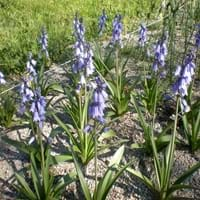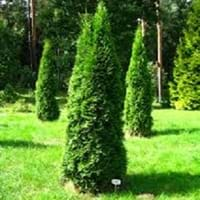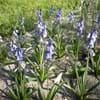Life Span
Perennial
Perennial
Type
Bulb or Corm or Tuber
Needled or Scaled Evergreen
Origin
Southern Europe, Western Europe, Northern Africa
North America, Canada
Types
Hyacinthoides flahaultiana, Hyacinthoides mauritanica, Hyacinthoides reverchonii
Not Available
Habitat
Parks, wastelands, Waysides, Woodland edges
Forest edges, Hardwood forests, Hillside, Roadsides, Woods
USDA Hardiness Zone
4-10
2-7
Sunset Zone
21,22
A2, A3, H1, H2, 1a, 1b, 2a, 2b, 3a, 3b, 4, 5, 6, 7, 8, 9, 15, 16, 17, 21, 22, 23, 24
Habit
Clump-Forming
Cushion/Mound-forming
Flower Color
White, Blue, Pink, Blue Violet
Brown
Flower Color Modifier
Bicolor
Bicolor
Fruit Color
Not Available
Light brown
Leaf Color in Spring
Green
Green
Leaf Color in Summer
Light Green
Green
Leaf Color in Fall
Several shades of Green
Green
Leaf Color in Winter
Light Green
Green
Leaf Shape
Narrow
Scale-like imbricate
Plant Season
Spring
Spring, Summer, Fall, Winter
Sunlight
Partial Sun, Partial shade
Full Sun
Type of Soil
Loam
Clay, Loam, Sand
The pH of Soil
Acidic, Neutral
Acidic, Neutral
Soil Drainage
Well drained
Average
Bloom Time
Spring, Late Spring
Early Spring, Late Spring
Tolerances
Drought
Drought
Where to Plant?
Ground
Ground
How to Plant?
By dividing rhizomes, tubers, From bulbs, Seedlings
Seedlings, Transplanting
Plant Maintenance
Medium
Medium
Watering Requirements
Average Water Needs, Do Not over Water, Requires regular watering
Requires watering in the growing season, Water Deeply, Water twice a day in the initial period
In Summer
Lots of watering
Lots of watering
In Spring
Moderate
Moderate
In Winter
Average Water
Average Water
Soil pH
Acidic, Neutral
Acidic, Neutral
Soil Type
Loam
Clay, Loam, Sand
Soil Drainage Capacity
Well drained
Average
Sun Exposure
Partial Sun, Partial shade
Full Sun
Pruning
Pinch Tips, Remove damaged leaves, Remove dead branches, Remove dead leaves, Remove dead or diseased plant parts
Remove damaged leaves, Remove dead branches, Remove dead leaves
Fertilizers
High amounts of nutrients, organic fertlizers
All-Purpose Liquid Fertilizer
Pests and Diseases
Red blotch
Red blotch
Plant Tolerance
Drought
Drought
Flowers
Yes
Insignificant
Flower Petal Number
Single
Single
Fragrant Bark/Stem
No
Yes
Foliage Texture
Medium
Medium
Foliage Sheen
Glossy
Matte
Attracts
Birds, Butterflies, pollinators
Birds
Aesthetic Uses
Showy Purposes
Beautification, Showy Purposes
Beauty Benefits
Not Available
Not Available
Environmental Uses
Air purification
Air purification
Medicinal Uses
Not Available
constipation, Headache
Part of Plant Used
Flowers
Whole plant
Other Uses
Beneficial species for attracting pollinators, Decoration Purposes, Showy Purposes, Used for Landscaping
Air freshner, Oil is used in perfume, soaps, creams, etc., Used as an insecticide
Used As Indoor Plant
No
No
Used As Outdoor Plant
Yes
Yes
Garden Design
Container, Cutflower, Mixed Border, Rock Garden / Wall, Wildflower
Edging, Foundation, Hedges, Mixed Border, Rock Garden, Wall
Botanical Name
HYACINTHOIDES hispanica
THUJA occidentalis 'Hetz Midget'
Common Name
Spanish Bluebell
Northern White Cedar
Eastern Arborvitae
In Hindi
Bluebell plant
अमेरिकी Arborvitae
In German
Endymion Pflanze
Lebensbaum
In French
plante Bluebell
Amérique Arborvitae
In Spanish
planta Bluebell
Americana Arborvitae
In Greek
φυτό Bluebell
αμερικανική Arborvitae
In Portuguese
planta Bluebell
Arborvitae americano
In Polish
Bluebell roślin
Amerykański Tuja
In Latin
Bluebell herba
American Arborvitae
Phylum
Magnoliophyta
Not Available
Class
Liliopsida
Pinopsida
Family
Liliaceae
Cupressaceae
Genus
Hyacinthoides
Arborvitae
Clade
Angiosperms, Monocots
Not Available
Tribe
Hyacintheae
Not Available
Subfamily
Scilloideae
Cupressoideae
Season and Care of Bluebell and American Arborvitae
Season and care of Bluebell and American Arborvitae is important to know. While considering everything about Bluebell and American Arborvitae Care, growing season is an essential factor. Bluebell season is Spring and American Arborvitae season is Spring. The type of soil for Bluebell is Loam and for American Arborvitae is Clay, Loam, Sand while the PH of soil for Bluebell is Acidic, Neutral and for American Arborvitae is Acidic, Neutral.
Bluebell and American Arborvitae Physical Information
Bluebell and American Arborvitae physical information is very important for comparison. Bluebell height is 30.00 cm and width 15.00 cm whereas American Arborvitae height is 90.00 cm and width 90.00 cm. The color specification of Bluebell and American Arborvitae are as follows:
Bluebell flower color: White, Blue, Pink and Blue Violet
Bluebell leaf color: Green
American Arborvitae flower color: Brown
- American Arborvitae leaf color: Green
Care of Bluebell and American Arborvitae
Care of Bluebell and American Arborvitae include pruning, fertilizers, watering etc. Bluebell pruning is done Pinch Tips, Remove damaged leaves, Remove dead branches, Remove dead leaves and Remove dead or diseased plant parts and American Arborvitae pruning is done Remove damaged leaves, Remove dead branches and Remove dead leaves. In summer Bluebell needs Lots of watering and in winter, it needs Average Water. Whereas, in summer American Arborvitae needs Lots of watering and in winter, it needs Average Water.





